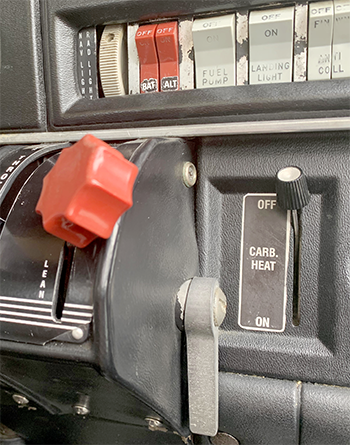Subscriber question:
"Three different instructors have told me three variations on checking carb heat during runup. What do you suggest?" —Ellie Z.
David:
 “My preferred method for checking the carb heat during runup is to combine it with a check of the mixture control.
“My preferred method for checking the carb heat during runup is to combine it with a check of the mixture control.
At runup RPM, apply full carb heat. You should see a drop in RPM which indicates that the heat is being added. Wait 15 seconds or so. If there is no rise in RPM, there’s no carb ice.
Then slowly lean the mixture. You should see an RPM rise as the overly rich mixture caused by carb heat is reduced. Continue leaning until you start to see an RPM drop, then go back to full rich mixture, and reduce the throttle to idle. The engine should idle smoothly. Increase the RPM to 1000 RPM, or as specified in the POH, and turn off the carb heat. You have now checked that the carb heat is working, there is no ice, the mixture control is working, and the carburetor idle adjustment is correctly set.
Of course, follow all POH guidance but I think you’ll find the above procedure will not be contrary to any guidance in the POH for the average single-engine piston aircraft with a carbureted engine.
One note of caution though: Always move the mixture control slowly. You should never lean so much the engine starts to quit as, this risks a backfire from unburnt fuel, which is death on muffler baffles.”
Learn more about engine checks on runup from PilotWorkshops Airplane Engines manual.
Do you have any carb heat checks you do beyond the "Carb heat — CHECK FOR RPM DROP" in the typical POH?
